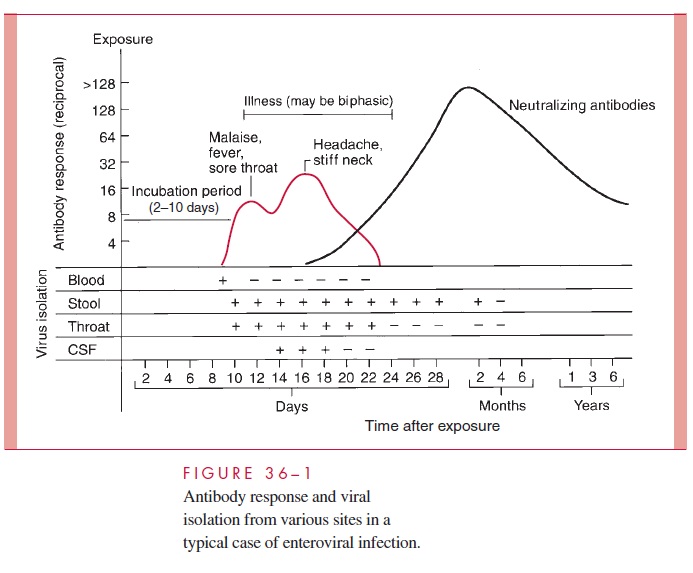Chapter: Medical Microbiology: An Introduction to Infectious Diseases: Enteroviruses
Entero Viruses: Clinical Aspects
ENTERO VIRUSES : CLINICAL ASPECTS
DIAGNOSIS
In acute enterovirus-caused syndromes, diagnosis is most readily established by virus iso-lation from throat swabs, stool or rectal swabs, body fluids, and occasionally tissues.
Viremia is usually undetectable by the time symptoms appear. When there is CNS in-volvement, cerebrospinal fluid (CSF) cultures taken during the acute phase of the disease may be positive in 10 to 85% of cases (except in poliovirus infections, in which virus re-covery from this site is rare), depending on the stage of illness and the viral serotype in-volved. Direct isolation of virus from affected tissues or body fluids in enclosed spaces (eg, pleural, joint, pericardial, or CSF) usually confirms the diagnosis. Isolation of an en-terovirus from the throat is highly suggestive of an etiologic association; the virus is usu-ally detectable at this site for only 2 days to 2 weeks after infection. Isolation of virus from fecal specimens only must be interpreted more cautiously; asymptomatic shedding from the bowel may persist for as long as 4 months (see Fig 36–1). The polymerase chain reaction with reverse transcription and complementary DNA amplification (RT-PCR) can also be used to detect enteroviral RNA sequences in tissues and body fluids, thus greatly enhancing diagnostic sensitivity and speed.

The diagnosis may be further supported by fourfold or greater neutralizing antibody titer changes between paired acute and convalescent serum samples. However, this method is often expensive and cumbersome, requiring careful selection of serotypes for use in antigens. Quantitative interpretations of antibody titers on single serum samples are rarely helpful, because of the wide range of titers to different serotypes that can be found among healthy individuals.
TREATMENT AND PREVENTION
None of the currently available, approved antiviral agents has been shown effective in treatment or prophylaxis of enterovirus infections; however, the antipicornaviral drug,pleconaril iscurrently being studied. Treatment is symptomatic and sup- portive. Vaccines for the prevention of poliovirus infections are discussed later. Although proper disposal of feces and careful personal hygiene are recom-mended, the usual quarantine or isolation measures are relatively ineffective in control-ling the spread of enteroviruses in the family or community.
Related Topics